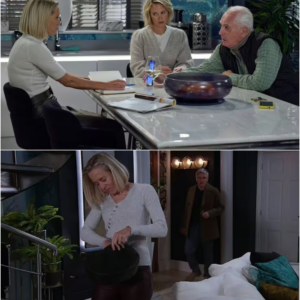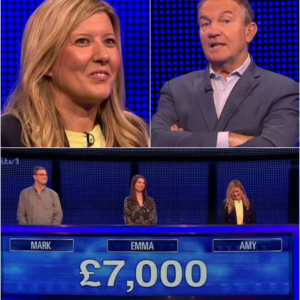A recent viral video has sparked fresh speculation about former President Donald Trump’s emotional state following a public snub by Vice President Kamala Harris during a 9/11 memorial event. The incident, which unfolded during the ceremony, has led to widespread debate online, raising questions about Trump’s behavior and Harris’s demeanor.

In the video, Harris is seen speaking with Senator Chuck Schumer when former New York City Mayor Michael Bloomberg steps in, appearing to facilitate a brief interaction between her and Trump. Trump attempts to engage Harris with a handshake and, characteristically, pulls her hand in forcefully. However, Harris quickly disengages and walks away without much acknowledgment, leaving Trump standing somewhat awkwardly. This moment, though brief, has been heavily scrutinized and shared widely, with many interpreting Harris’s actions as a clear sign of dismissal toward Trump.
Observers have noted Trump’s apparent discomfort during the interaction. According to John Marshall, a political commentator, it seemed as though Trump sought Bloomberg’s help to get Harris’s attention, but Harris appeared uninterested in engaging beyond a polite greeting. The video, played repeatedly across social media platforms, highlights Trump’s signature aggressive handshake—something he is known for—only to be met with indifference from Harris, who swiftly turned away.
This interaction has fueled speculation about Trump’s emotional state post-debate, as his social media activity has become increasingly frantic. Trump has repeatedly posted on his Truth Social account, claiming that he won the debate against Harris and has no need for a second debate. He shared polls from questionable sources, such as Benny Johnson, a figure linked to Russian propaganda, to bolster his claim of a landslide victory in the debate. Johnson’s post praised Trump, stating that 60% of undecided voters now favored him, but the credibility of the poll has been widely questioned.
The 9/11 memorial incident adds to a growing narrative about Trump’s increasingly fragile image. Just before the memorial, Trump had arrived with Laura Loomer, a far-right conspiracy theorist who previously shared a video suggesting that the 9/11 attacks were an “inside job.” Trump’s association with figures like Loomer, combined with his inflammatory rhetoric, continues to alienate mainstream Republicans and voters.
The contrast between Trump and Harris’s behavior during the 9/11 memorial has been widely discussed. Harris was seen as composed and professional, even in her brief encounter with Trump. In contrast, Trump’s reaction to the debate loss and his escalating social media posts paint a picture of a man struggling to maintain control of his public image. His appearance with Loomer and subsequent tirades about debate moderators fact-checking him while supposedly ignoring Harris have only fueled perceptions of a leader increasingly out of touch.
One of the most striking moments in Trump’s post-debate meltdown was his appearance on Fox News, where he hinted that he may not participate in another debate with Harris. “I don’t know if I want to do another debate,” Trump said, sounding defensive and frustrated. He blamed the moderators, claiming that they corrected him unfairly while letting Harris get away with falsehoods—though fact-checkers have pointed out that Trump consistently made more inaccurate statements during the debate.
Trump’s refusal to engage in another debate, paired with his cherry-picking of favorable polls from dubious sources, has raised eyebrows. His insistence that he won the debate “by a landslide” contrasts sharply with the broader public perception, where many saw Harris as the clear winner. The situation highlights a growing divide between Trump’s core supporters, who continue to rally behind him, and more moderate Republicans who are increasingly distancing themselves.
This 9/11 memorial interaction further underscores the widening gap between Trump’s base and mainstream political figures. Harris’s calm demeanor, even when faced with Trump’s attempt to force an interaction, has been seen as a testament to her professionalism. In contrast, Trump’s erratic behavior, from his handshake attempt to his defensive social media posts, suggests a leader increasingly on edge.
As the election season progresses, these moments will likely play a pivotal role in shaping public opinion. The viral nature of the video, combined with Trump’s public unraveling, is likely to influence undecided voters and moderate Republicans who, as seen in recent polls, are beginning to shift away from Trump in favor of candidates who demonstrate stability and leadership.
In conclusion, the footage of Kamala Harris seemingly snubbing Donald Trump at a 9/11 memorial has added fuel to ongoing discussions about Trump’s behavior in the public eye. His frantic attempts to control the narrative after the debate, combined with Harris’s composed response, have only deepened the perception that Trump is struggling to maintain his former dominance in the political arena. Whether this moment will have lasting consequences remains to be seen, but it certainly reinforces the contrasting styles and temperaments of the two leaders.



